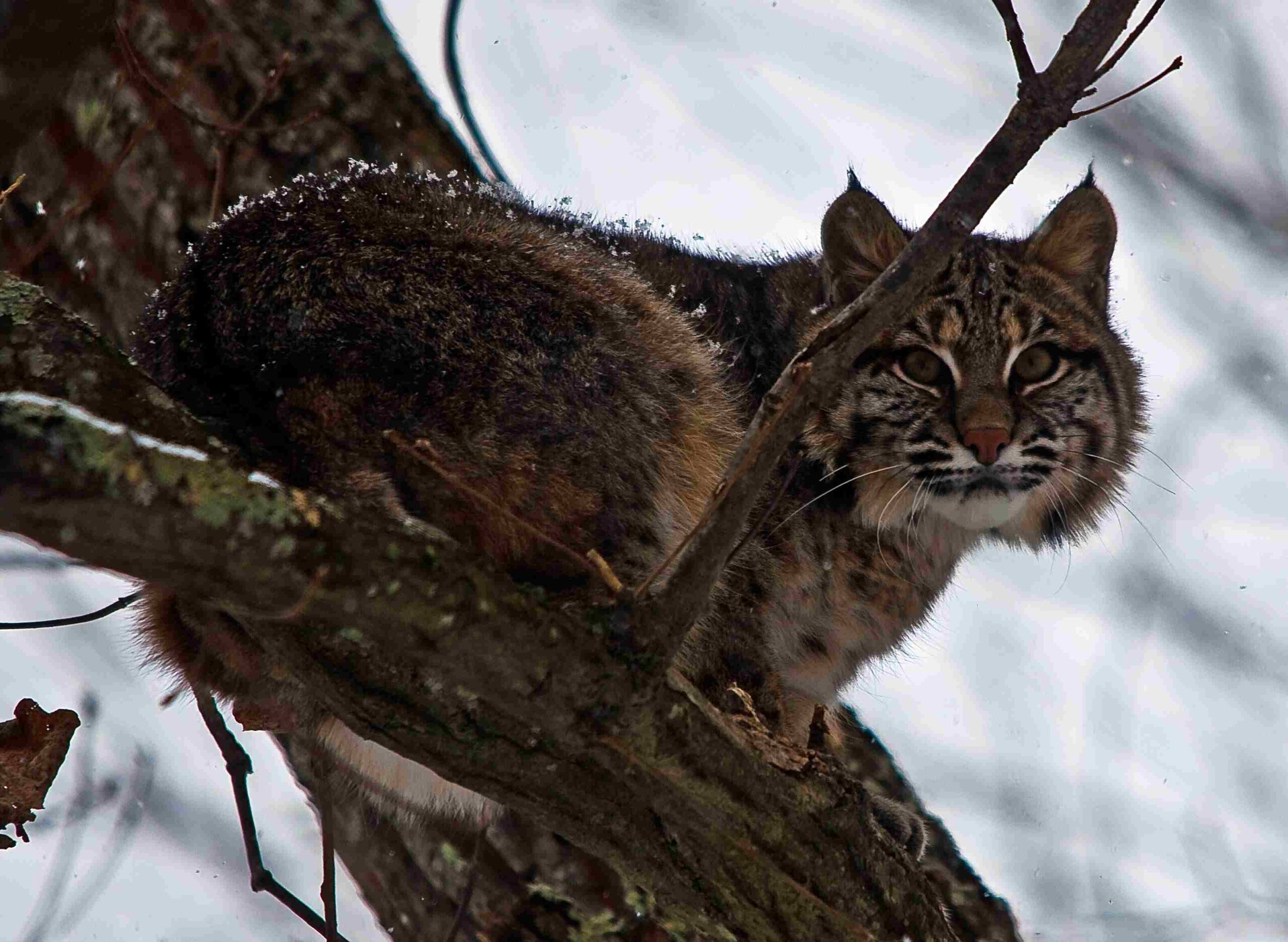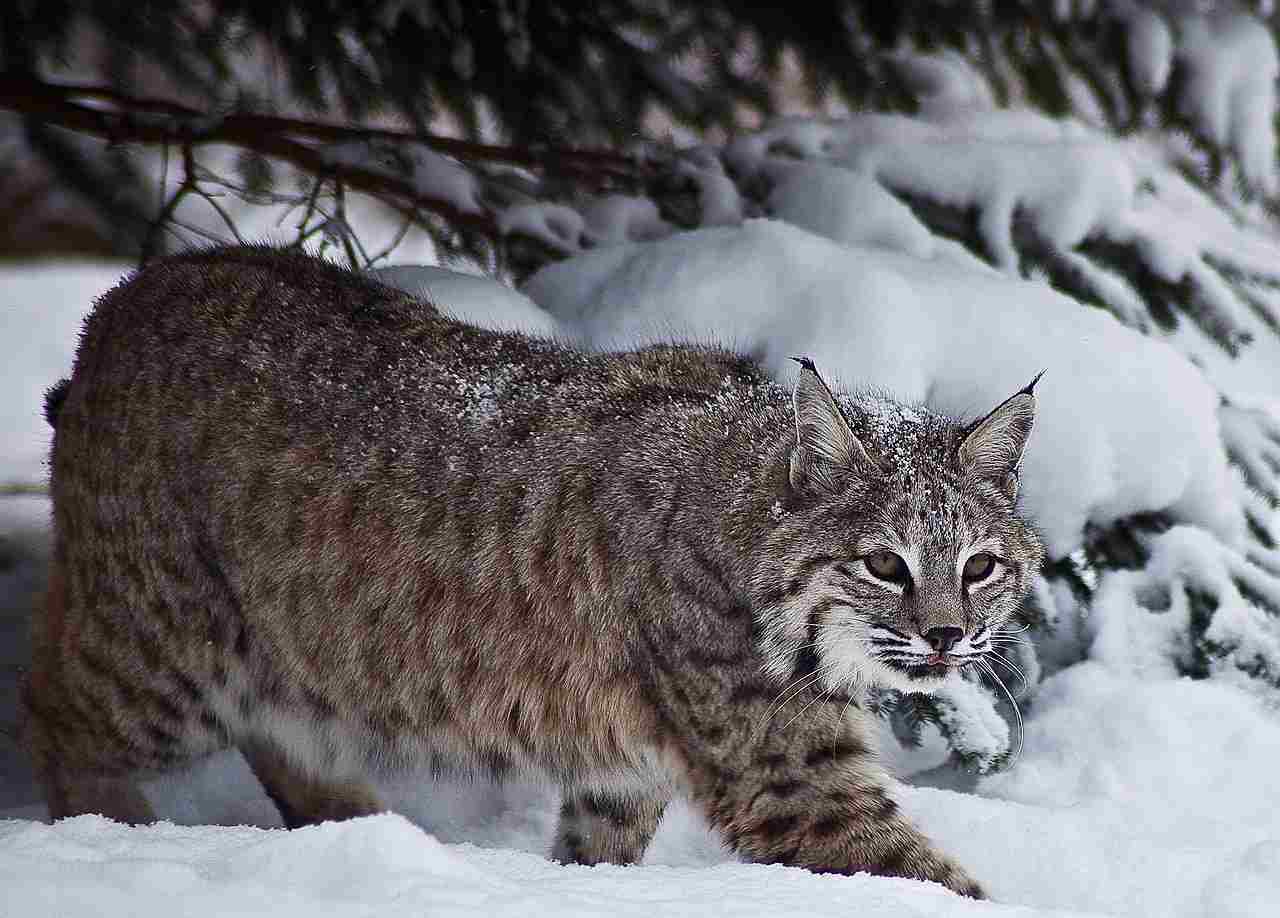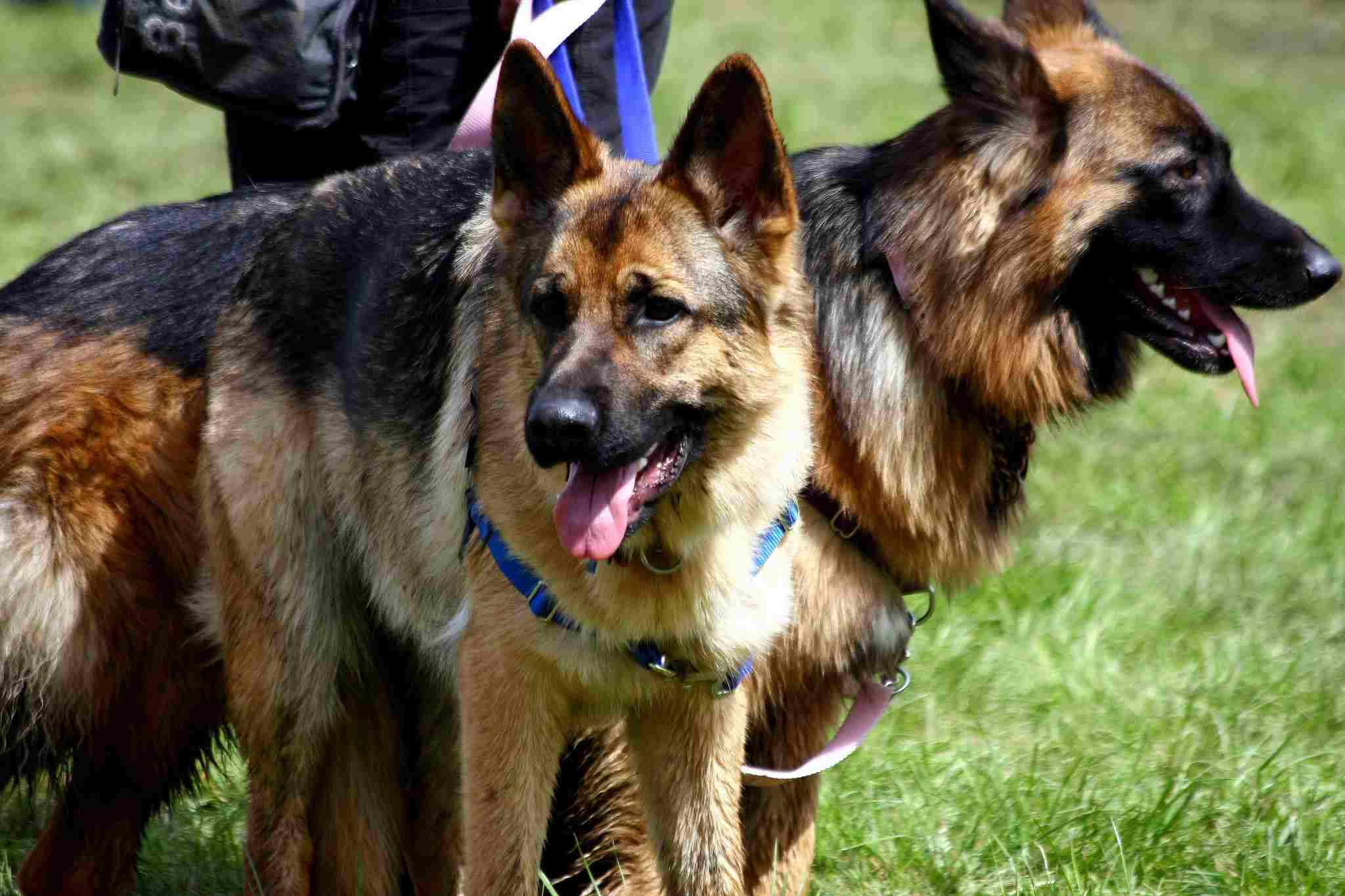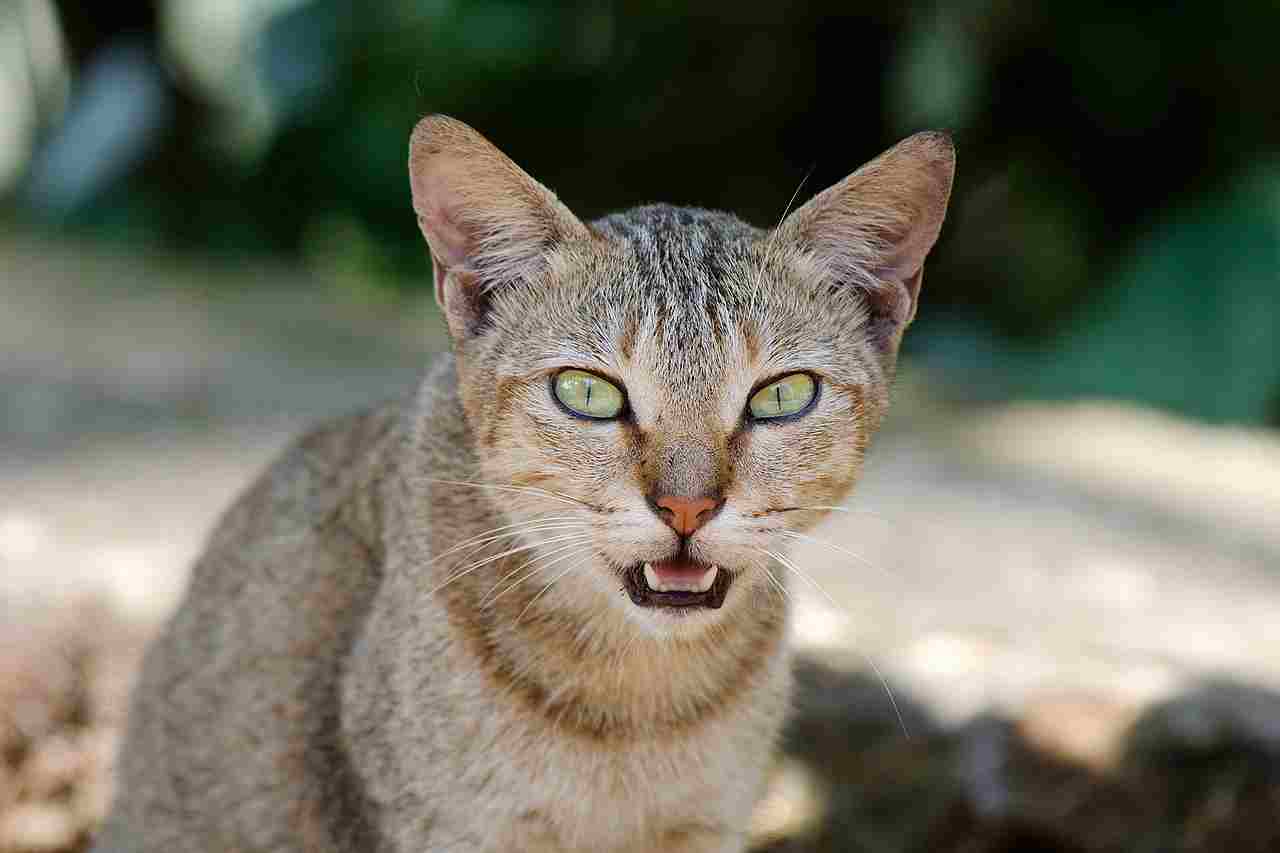Bobcat Vs Dog Size, Weight, Overall Comparison
In exploring a hypothetical confrontation between a bobcat and a dog, we analyze their respective characteristics to anticipate the potential outcome. This analysis considers their taxonomy, appearance, size, weight, agility, aggressiveness, and predatory features.
Bobcat vs Dog: Assessing the Likely Victor in a Confrontation
In a theoretical showdown between a bobcat and a dog, the likelihood of victory depends on the size of the dog. A small or medium-sized dog may succumb to the bobcat’s superior speed, agility, and predatory features, while a larger dog could overpower the bobcat, albeit at the risk of severe injury.
I). Speed and Agility:
– Bobcats, known for their agility and speed, have a distinct advantage over small or medium-sized dogs. The bobcat’s ability to swiftly navigate the terrain allows it to outmaneuver and potentially subdue a dog of lesser size.
II). Predatory Features:
– The bobcat’s predatory features, including sharp claws and teeth, give it an edge in a confrontation with a dog. These natural weapons, coupled with the bobcat’s agility, enable it to effectively defend itself and counter a dog’s attacks.
III). Size Consideration:
– Against a small or medium-sized dog, the bobcat is likely to emerge as the victor due to its superior speed, agility, and predatory features. The bobcat’s hunting prowess is well-suited to handle dogs of smaller stature.
IV). Larger Dog Scenario:
– When facing a larger dog, the bobcat’s chances of winning diminish. While the bobcat retains its speed, agility, and predatory features, the sheer strength and size of a larger dog may allow it to overpower the bobcat, although not without the risk of sustaining severe injuries from the bobcat’s defensive capabilities.
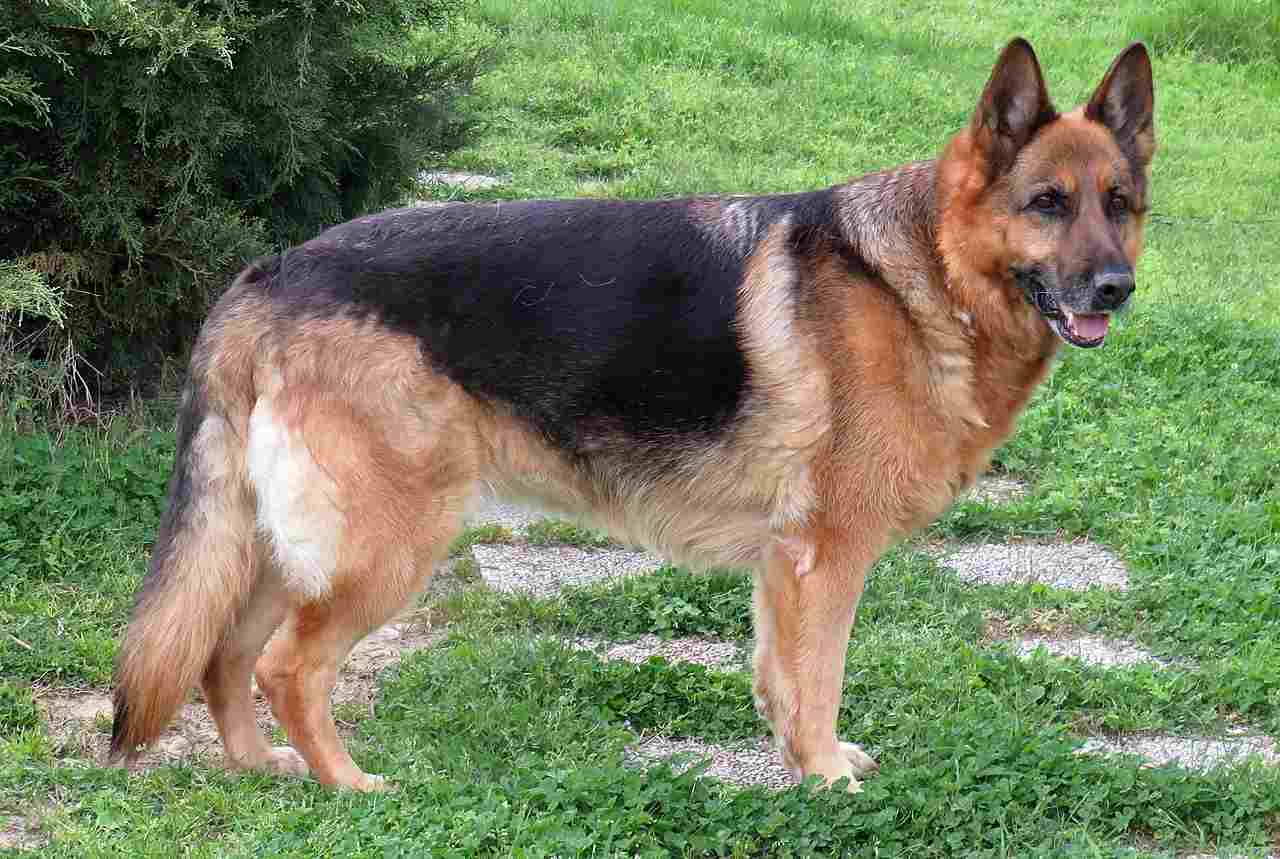
V). Overall Verdict:
– In a confrontation between a bobcat and a dog, the outcome hinges on the dog’s size. A bobcat is likely to prevail against a small or medium-sized dog, utilizing its superior speed, agility, and predatory features. However, a larger dog may have the strength to overpower the bobcat, albeit not without facing significant risks of injury due to the bobcat’s defensive capabilities.
*Details of Comparison
| Criteria | Bobcat | Domestic Dog |
| Taxonomy | Lynx rufus (Felidae family) |
Canis lupus familiaris (Canidae family)
|
| Appearance | Reddish-brown coat, black spots, tufted ears, bobbed tail |
Diverse appearance based on breed, coat colors, and patterns
|
| Size | 2-3 feet in body length |
Varies widely among breeds
|
| Weight | 15-35 pounds |
Varies significantly among breeds
|
| Bite Force | Not extensively documented |
Varies among breeds; can be powerful
|
| Physical Offensive Advantages | Sharp claws, powerful jaw, agility |
Varied offensive abilities based on breed
|
| Physical Defensive Advantages | Agility, speed, sharp claws, teeth |
Defensive abilities vary among breeds
|
| Speed | Up to 30 mph |
Varies among breeds
|
| Agility | Highly agile, tree-climbing |
Agility varies among breeds
|
| Overall Physical Capacity | Balanced for hunting and survival |
Diverse capacities influenced by roles and breeds
|
| Habitat Preference(s) | Adaptable to diverse habitats |
Adapted to living with humans in various environments
|
| Tracks | Four toes, retractable claws, “M” shape |
Varies in size and shape
|
| Lifespan | 7-10 years in the wild |
Varies widely among breeds
|
| Mode of Feeding | Carnivorous, preys on small mammals |
Omnivores, diverse diets based on breed
|
| Social Behavior | Solitary, except during mating and raising offspring |
Highly social, forms bonds with humans and other dogs
|
| Mode of Reproduction | Seasonal breeding, gestation 60-70 days |
Breeding patterns vary among breeds
|
| Parental Behavior | Females raise offspring alone |
Parental care varies among breeds
|
| Proximity to Human-Inhabited Areas | Generally avoids, may enter urban areas |
Adapted to live closely with humans
|
| Behavior Toward Humans | Elusive, defensive if threatened |
Varied behaviors influenced by breed and training
|
| Danger Posed to Humans | Low risk, attacks rare and defensive |
Risk varies based on temperament, training, and breed
|
| Associated Precautions | Conservation measures, public education |
Responsible ownership practices, training
|
| Conservation Status | “Least Concern” on the IUCN Red List |
Not subject to formal conservation assessments
|
Key Points:
Similarities:
-
- Both belong to Carnivora.
- Share physical adaptations.
Differences:
-
- Bobcats: Wild, solitary hunter. Domestic dogs: Diverse, shaped by human selection.
- Bobcats avoid humans; dogs are highly social and adapted to living with humans.
- Conservation efforts for bobcats focus on habitats; domestic dogs are managed through breeding and care.
1. Taxonomy:
Bobcat (Lynx rufus):
Kingdom: Animalia
Phylum: Chordata
Class: Mammalia
Order: Carnivora
Family: Felidae
Genus: Lynx
Species: rufus
Domestic Dog (Canis lupus familiaris):
Kingdom: Animalia
Phylum: Chordata
Class: Mammalia
Order: Carnivora
Family: Canidae
Genus: Canis
Species: lupus familiaris
2. Appearance:
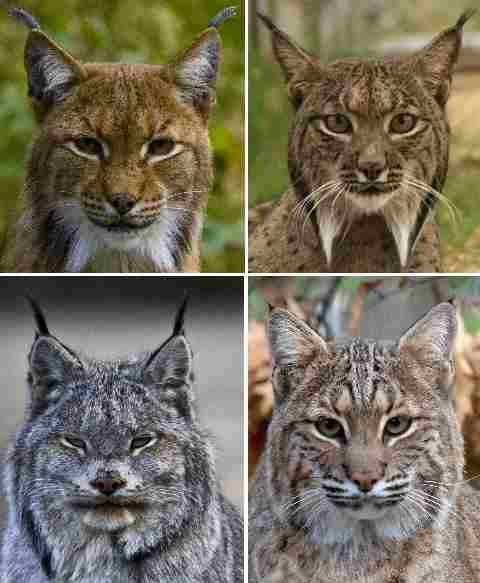
Bobcat:
Short, dense fur with a reddish-brown coat and distinctive black spots.
Tufted ears and a short, bobbed tail.
Robust body with a height at the shoulder of around 21 inches (53 cm).
Domestic Dog:
Varied appearance depending on breed; diverse coat colors, patterns, and lengths.
Ears and tails vary in shape and size.
Wide range of sizes, from small breeds like Chihuahuas to large breeds like Great Danes.
Comparison: Bobcats have a more consistent appearance across individuals, characterized by their distinctive spots and bobbed tail. Domestic dogs display a wide array of appearances due to selective breeding for various purposes.
Ecological Implications: Bobcats’ camouflage and distinctive markings help them blend into their natural environment, aiding in hunting. The diverse appearance of domestic dogs results from human-driven selective breeding, emphasizing traits suitable for various roles, such as companionship, herding, or hunting.
3. Size:
Bobcat:
Typically 2 to 3 feet (60-90 cm) in body length.
Tail length of 4 to 7 inches (10-18 cm).
Domestic Dog:
Varies significantly among breeds, ranging from a few inches to over 3 feet (90 cm) in body length.
Tail length varies, and some dogs may have naturally short or docked tails.
Comparison: While bobcats have a relatively consistent size range, domestic dogs exhibit significant size diversity influenced by selective breeding.
Ecological Implications: Bobcats’ size allows them to navigate diverse terrains, aiding in hunting and survival. Domestic dogs’ size variations are often tailored to specific tasks, such as herding, guarding, or companionship.
4. Weight:
Bobcat:
Typically weighs between 15 to 35 pounds (7-16 kg).
Domestic Dog:
Weight varies widely among breeds, from a few pounds to over 100 pounds (45 kg).
Comparison: Bobcats generally fall within a specific weight range, whereas domestic dogs exhibit a broader range influenced by selective breeding.
Ecological Implications: Bobcats’ weight is adapted for agility in hunting and survival. Domestic dogs’ weight is influenced by their specific roles, such as guarding, pulling carts, or being companion animals.
5. Bite Force:
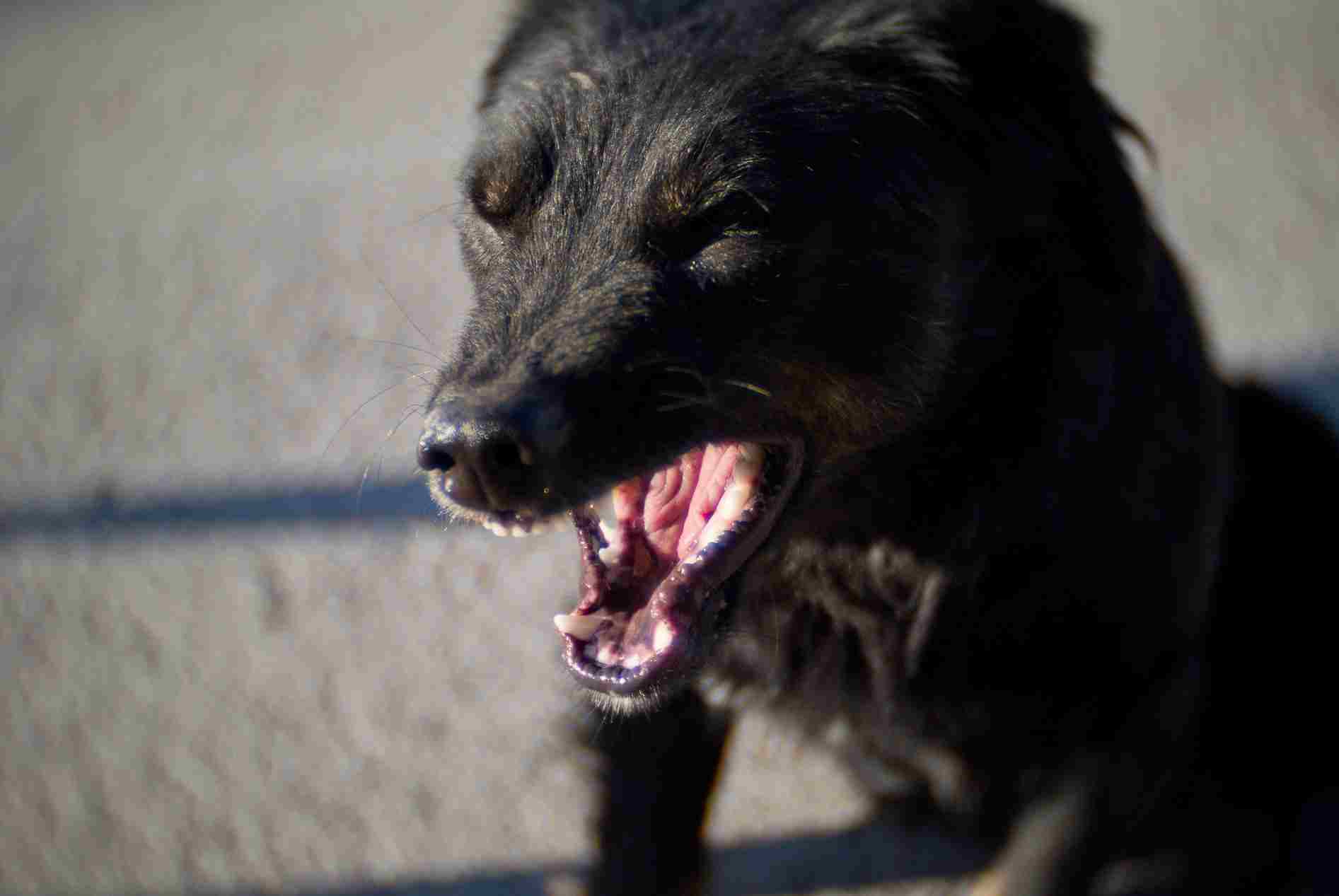
Bobcat:
Bite force not extensively documented, but adapted for gripping and killing prey.
Domestic Dog:
Bite force varies among breeds; for example, the bite force of a German Shepherd is around 238 pounds per square inch (psi).
Comparison: Domestic dogs may have a more powerful bite force, depending on the breed, compared to bobcats.
Ecological Implications: Bobcats rely on their bite for hunting, while domestic dogs’ bite force may be tailored to their historical roles, such as guarding or assisting in specific tasks.
6. Physical Offensive Advantages:
Bobcat:
Sharp retractable claws and powerful jaw for efficient prey capture.
Agile and stealthy, capable of ambushing prey.
Domestic Dog:
Varied offensive abilities based on breed, including strong jaws, speed, and endurance.
Some breeds may be trained for specific tasks like herding or protection.
Comparison: Bobcats rely on agility and stealth for offensive strategies, while domestic dogs may have diverse offensive skills depending on their breeding and training.
Ecological Implications: Bobcats’ offensive advantages are adapted for hunting and survival, whereas domestic dogs may have specific offensive traits cultivated by humans for various purposes.
7. Physical Defensive Advantages:
Bobcat:
Agility and speed for evading predators.
Sharp claws and teeth as defensive weapons.
Domestic Dog:
Defensive abilities vary; some breeds have strong bites, while others rely on agility to escape threats.
Humans often play a role in providing protection to domestic dogs.
Comparison: Bobcats primarily rely on natural defensive features, while domestic dogs may have defensive traits developed through selective breeding or human intervention.
Ecological Implications: Bobcats’ defensive advantages contribute to their survival in the wild, while domestic dogs may depend on humans for protection.
8. Speed:
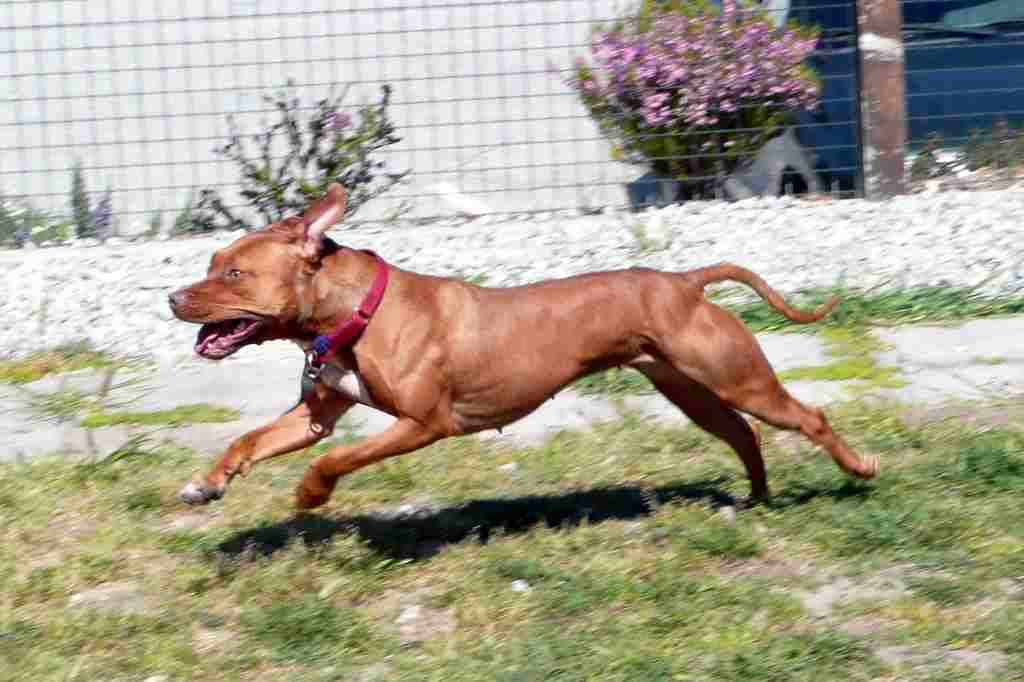
Bobcat:
Capable of reaching speeds up to 30 miles per hour (48 km/h).
Domestic Dog:
Speed varies widely among breeds, with some capable of reaching speeds comparable to bobcats.
Comparison: While bobcats are generally swift, domestic dogs can exhibit diverse speeds influenced by breed characteristics.
Ecological Implications: Bobcats’ speed is crucial for hunting and escaping predators, while domestic dogs’ speed may be influenced by their roles, such as chasing prey or participating in dog sports.
9. Agility:
Bobcat:
Highly agile, able to climb trees and navigate various terrains.
Domestic Dog:
Agility varies among breeds; some are agile for specific tasks like herding, while others may be less nimble.
Comparison: Bobcats exhibit consistent high agility, while domestic dogs’ agility is influenced by their specific breed characteristics.
Ecological Implications: Bobcats’ agility is essential for hunting and survival in their natural habitat. Domestic dogs’ agility may be tailored to their historical roles, such as herding or assisting humans in various tasks.
10. Overall Physical Capacity:
Bobcat:
Possesses a well-adapted physique for hunting, climbing, and surviving in diverse environments.
Balanced combination of strength, agility, and speed.
Domestic Dog:
Physical capacity varies widely among breeds, tailored for specific roles like herding, hunting, or companionship.
Diversity in size and physique contributes to a range of physical capabilities.
Comparison: Bobcats generally exhibit a balanced set of physical traits adapted for survival, while domestic dogs’ physical capacities are diverse, reflecting their historical roles.
Ecological Implications: Bobcats’ overall physical capacity is finely tuned for their ecological niche, while domestic dogs’ capabilities may be shaped by human preferences and selective breeding.
11. Habitat Preference(s):
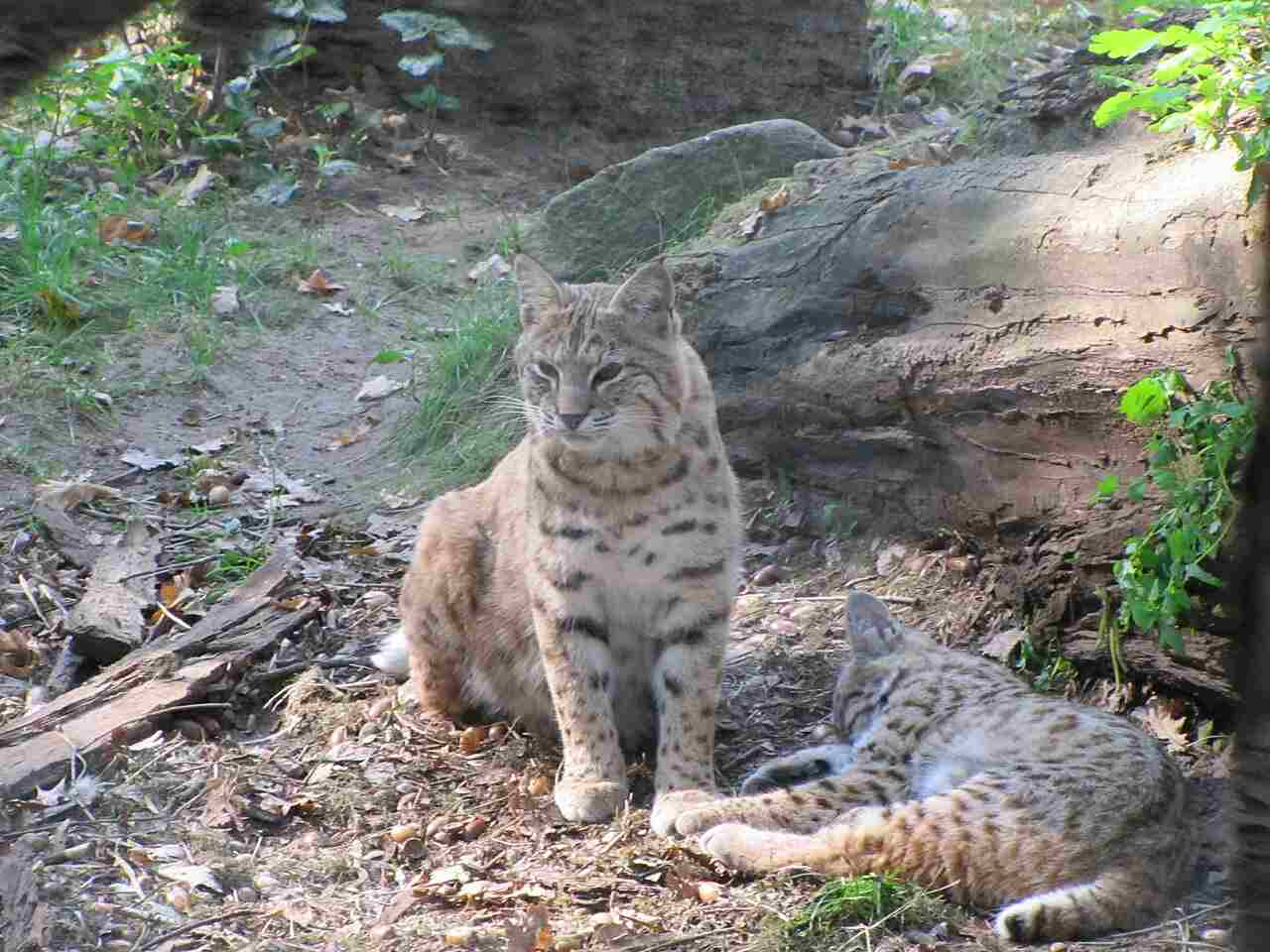
Bobcat:
Prefers diverse habitats, including forests, deserts, and swamps.
Adaptable to different terrains, utilizing natural shelters.
Domestic Dog:
Adapted to living in proximity to humans, in various environments ranging from urban to rural.
Varied preferences based on breed characteristics.
Comparison: While bobcats exhibit a broad habitat range in the wild, domestic dogs have adapted to living alongside humans in diverse settings.
Ecological Implications: Bobcats’ habitat preferences reflect their ability to thrive in different ecosystems, while domestic dogs’ adaptability to human environments has ecological implications related to human-wildlife interactions.
12. Tracks:
Bobcat:
Paw prints typically show four toes with retractable claws.
Tracks may exhibit a distinctive “M” shape due to the arrangement of toes.
Domestic Dog:
Paw prints vary widely among breeds but generally show more claw marks, reflecting non-retractable claws.
Size and shape depend on the breed.
Comparison: Bobcat tracks often have a distinct appearance, while domestic dog tracks show more variability in size and shape.
Ecological Implications: Tracking can be used to identify the presence of bobcats or domestic dogs in an area, aiding in ecological research and wildlife management.
13. Lifespan:
Bobcat:
Typically lives 7 to 10 years in the wild, with variations based on factors like habitat and food availability.
Domestic Dog:
Lifespan varies widely among breeds, ranging from around 7 to 20 years or more.
Comparison: Bobcats generally have a shorter lifespan in the wild compared to the diverse lifespans of domestic dogs, influenced by selective breeding and care.
Ecological Implications: Bobcats’ lifespan is adapted to the challenges of the wild, while domestic dogs’ lifespan may be influenced by their roles, health care, and living conditions.
14. Mode of Feeding:
Bobcat:
Carnivorous diet, primarily preying on small mammals like rabbits and rodents.
Hunting involves stalking and ambushing prey.
Domestic Dog:
Dietary habits vary among breeds; most are omnivores, but some are specialized for certain roles, such as herding or hunting.
Domestic dogs are often fed by humans, with commercial or homemade diets.
Comparison: Bobcats are obligate carnivores, while domestic dogs have a more varied diet influenced by their roles and human care.
Ecological Implications: Bobcats play a crucial role in controlling small mammal populations in their ecosystems, while domestic dogs’ diets may impact them depending on their interactions with wildlife.
15. Social Behavior:
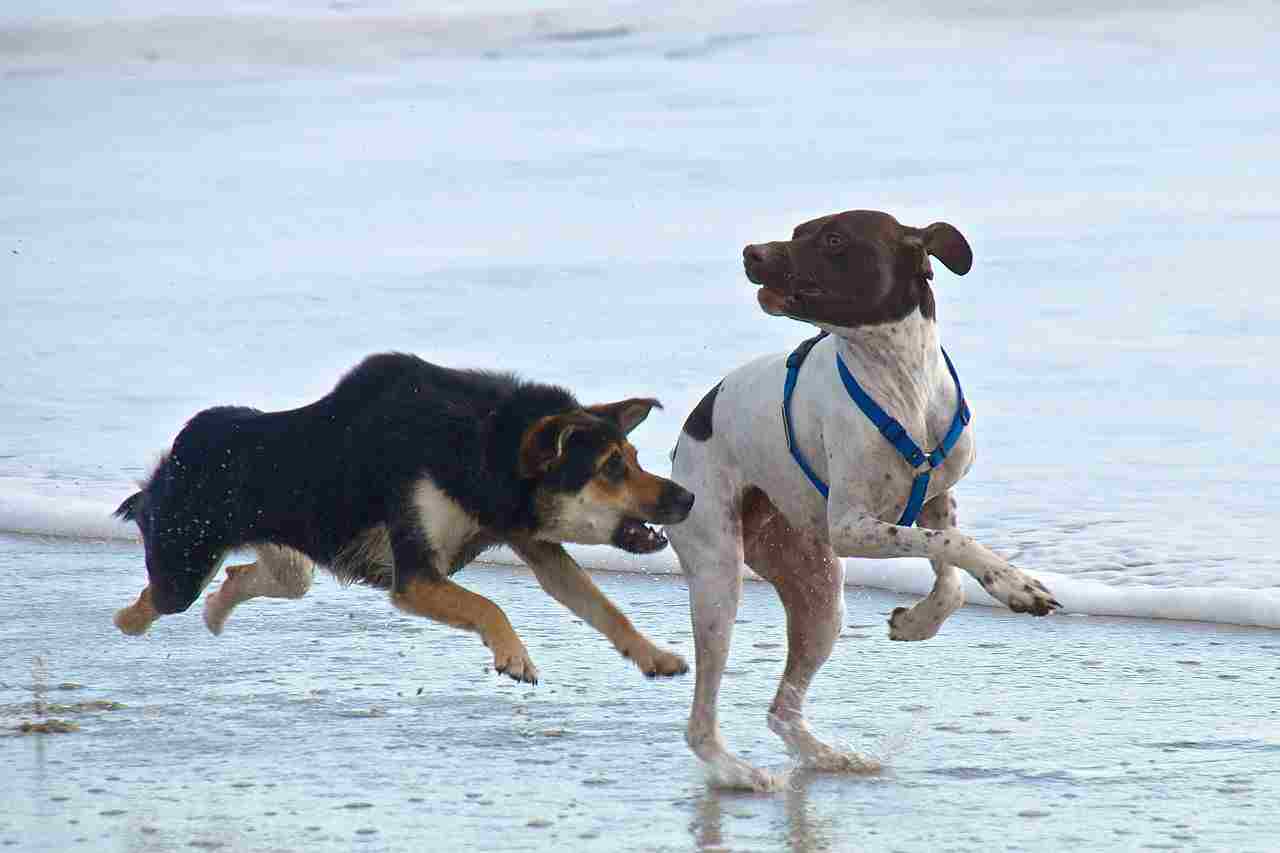
Bobcat:
Generally solitary animals, except during mating and when raising offspring.
Territories are marked and defended.
Domestic Dog:
Highly social animals, exhibiting a wide range of social behaviors.
Domestic dogs form bonds with humans and other dogs, displaying pack-like behavior.
Comparison: Bobcats are primarily solitary, while domestic dogs are known for their social nature, often forming bonds with humans and other dogs.
Ecological Implications: Bobcats’ solitary behavior is adapted to their hunting and territorial needs, while domestic dogs’ social nature is influenced by their long history of domestication and coexistence with humans.
16. Mode of Reproduction:
Bobcat:
Seasonal breeders, with mating typically occurring in late winter or early spring.
Gestation lasts around 60-70 days, and a litter usually consists of 2-4 kittens.
Domestic Dog:
Breeding patterns vary; some breeds have specific heat cycles, while others can breed year-round.
Gestation lasts around 58-68 days, and litter size varies widely among breeds.
Comparison: Both bobcats and domestic dogs exhibit sexual reproduction, but their breeding patterns and litter sizes vary.
Ecological Implications: Bobcats’ reproductive strategies are adapted to seasonal changes in their environment, while domestic dogs’ breeding patterns may be influenced by human interventions and breeding practices.
17. Parental Behavior:
Bobcat:
Females raise and care for their offspring alone.
Kittens are dependent on their mother for several months.
Domestic Dog:
Parental care varies among breeds; some display strong maternal instincts, while others may require more human intervention.
Puppies are cared for by the mother, and humans may assist in the care and socialization process.
Comparison: Bobcats exhibit solitary parental care, while domestic dogs may have varying degrees of maternal instincts and human involvement.
Ecological Implications: Bobcats’ parental behavior supports the survival of their offspring in the wild, while domestic dogs’ care may be influenced by the level of human involvement in the breeding and rearing process.
18. Proximity to Human-Inhabited Areas:
Bobcat:
Generally avoids human-populated areas but may venture close to urban environments in search of prey.
Human-wildlife conflicts can arise when bobcats enter residential areas.
Domestic Dog:
Adapted to living in close proximity to humans, often residing in households as pets.
Domestic dogs are familiar with human environments and routines.
Comparison: Bobcats tend to avoid human-populated areas, whereas domestic dogs are intentionally bred and kept in close association with humans.
Ecological Implications: The proximity of bobcats to human-inhabited areas may lead to conflicts and conservation challenges, while domestic dogs’ close association with humans has implications for their roles as companions and working animals.
19. Behavior Toward Humans:
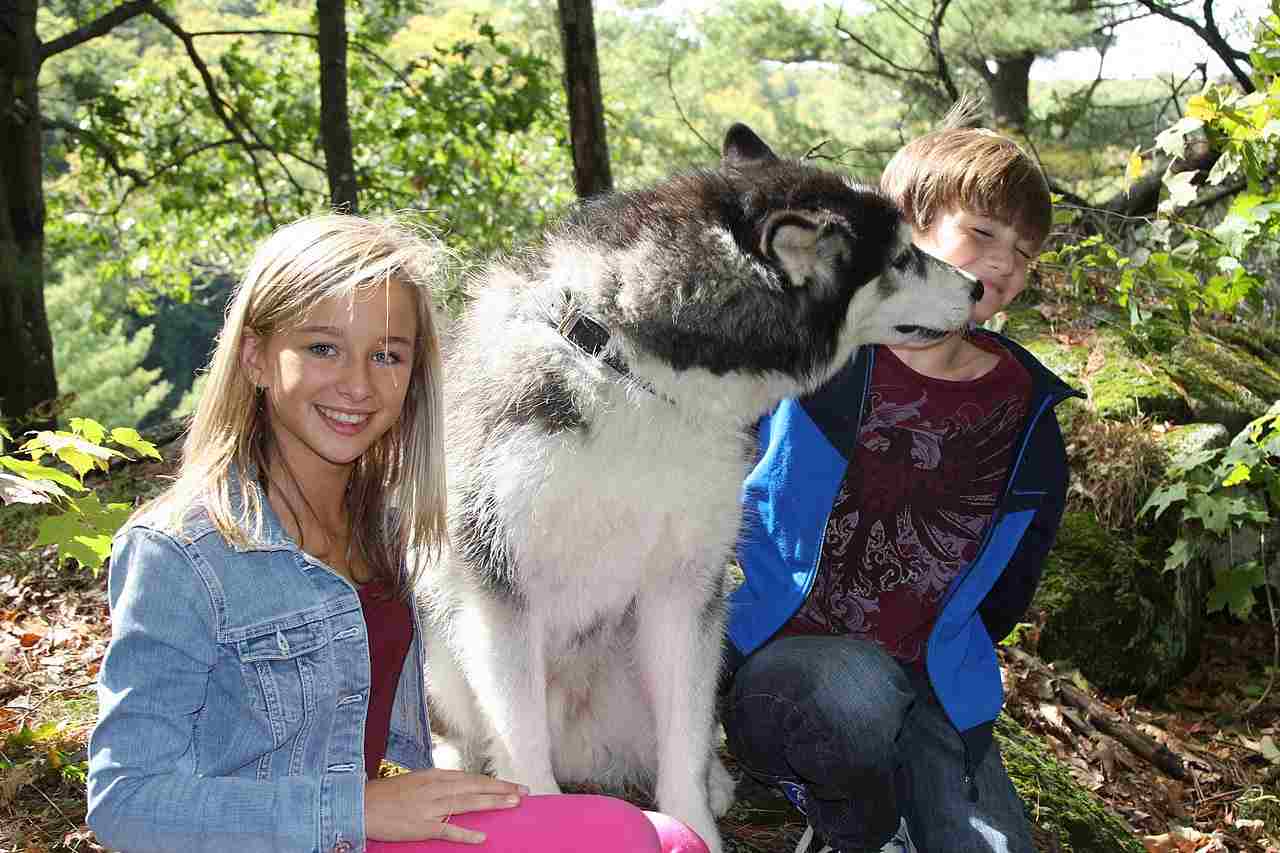
Bobcat:
Generally elusive and avoids direct interaction with humans.
May display defensive behavior if cornered or threatened.
Domestic Dog:
Exhibits a wide range of behaviors, from friendly and affectionate to protective or aggressive based on breed and training.
Domestic dogs often seek interaction with humans.
Comparison: Bobcats tend to be more elusive and avoid human interaction, while domestic dogs have diverse behaviors influenced by breeding and training.
Ecological Implications: Bobcats’ avoidance of humans is a natural behavior that helps prevent conflicts, while domestic dogs’ varied behaviors are shaped by their roles as companions, protectors, or workers.
20. Danger Posed to Humans:
Bobcat:
Generally poses a low risk to humans; attacks are rare and usually occur when cornered or threatened.
Avoidance of humans is a key defensive strategy.
Domestic Dog:
Can pose risks based on individual temperament, training, and socialization.
Incidents of dog bites are more common, and certain breeds may be perceived as higher risk.
Comparison: Bobcats typically pose a lower risk to humans, while domestic dogs’ potential danger varies based on factors such as breed, training, and socialization.
Ecological Implications: Bobcats’ low risk to humans contributes to their conservation by minimizing conflicts, while responsible ownership and management are essential for mitigating risks associated with domestic dogs.
21. Associated Precautions:
Bobcat:
Conservation measures focus on preserving natural habitats and minimizing human-wildlife conflicts.
Educating the public about coexistence and avoiding feeding wild bobcats.
Domestic Dog:
Responsible ownership practices, including leash laws, proper confinement, and socialization.
Ensuring dogs receive adequate training and vaccinations to prevent public safety issues.
Comparison: Conservation efforts for bobcats focus on habitat preservation, while precautions for domestic dogs involve responsible ownership practices.
Ecological Implications: Implementing precautions for bobcats contributes to their conservation and reduces conflicts, while responsible dog ownership helps maintain harmonious relationships between humans and domestic dogs.
22. Conservation Status:
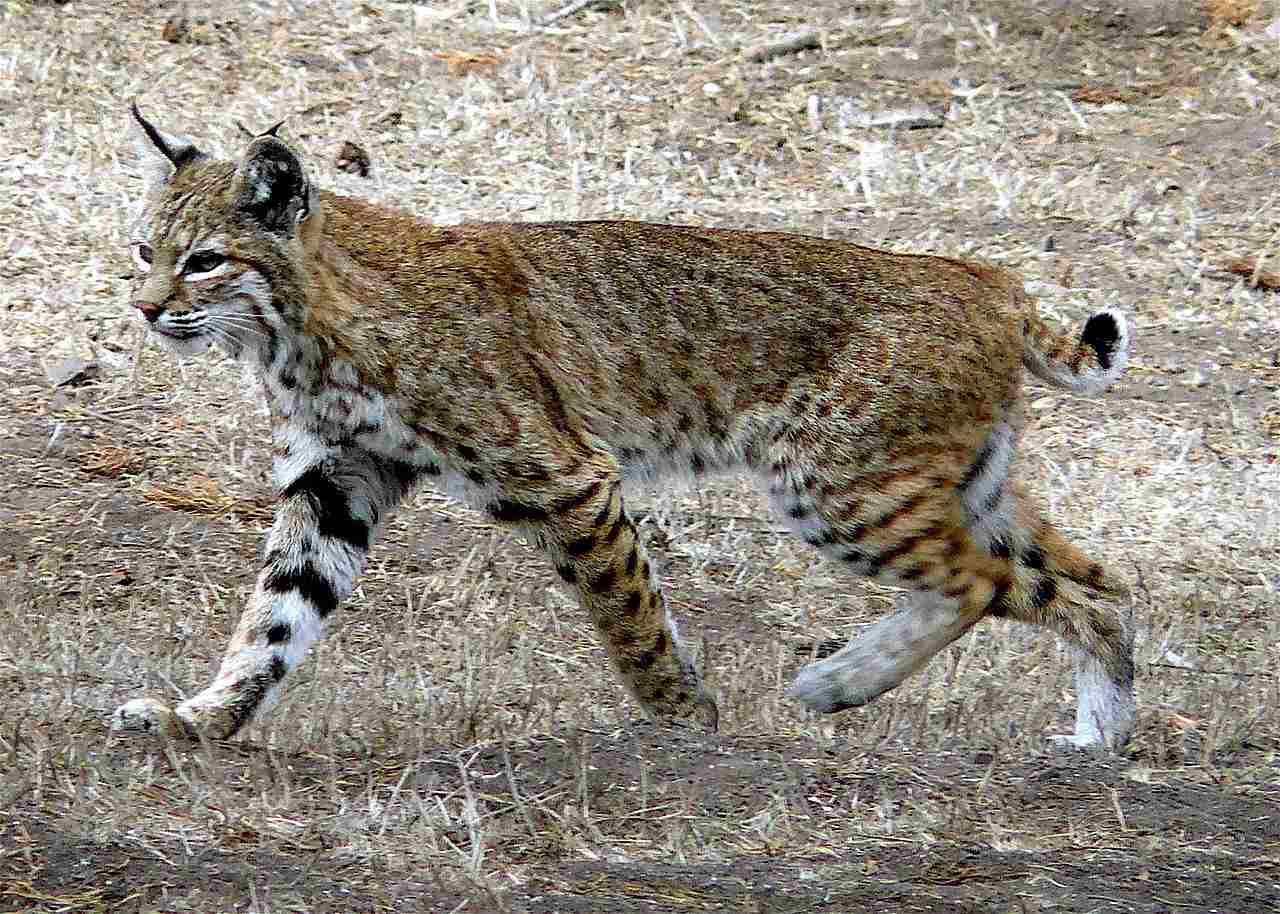
Bobcat:
Generally considered a species of “Least Concern” on the International Union for Conservation of Nature (IUCN) Red List.
Populations are relatively stable, but localized threats, such as habitat loss and fragmentation, can impact regional populations.
Domestic Dog:
Not subject to formal conservation assessments as they are domesticated animals.
Various breeds may face specific health concerns, but overall populations are managed through selective breeding.
Comparison: Bobcats, as a wild species, undergo formal conservation assessments, while domestic dogs are managed through breeding practices and health considerations.
Ecological Implications: Conservation efforts for bobcats are essential for maintaining healthy ecosystems, while domestic dogs’ management focuses on breed-specific health and responsible breeding practices.
Summary of Bobcat vs. Domestic Dog Comparison:
Taxonomy:
Bobcat: Lynx rufus (Felidae family)
Domestic Dog: Canis lupus familiaris (Canidae family)
Appearance:
Bobcat: Reddish-brown coat, black spots, tufted ears, bobbed tail.
Domestic Dog: Diverse appearance based on breed, coat colors, and patterns.
Size:
Bobcat: 2-3 feet in body length.
Domestic Dog: Varies widely among breeds.
Weight:
Bobcat: 15-35 pounds.
Domestic Dog: Varies significantly among breeds.
Bite Force:
Bobcat: Not extensively documented.
Domestic Dog: Varies among breeds; can be powerful.
Physical Offensive Advantages:
Bobcat: Sharp claws, powerful jaw, agility.
Domestic Dog: Varied offensive abilities based on breed.
Physical Defensive Advantages:
Bobcat: Agility, speed, sharp claws, teeth.
Domestic Dog: Defensive abilities vary among breeds.
Speed:
Bobcat: Up to 30 mph.
Domestic Dog: Varies among breeds.
Agility:
Bobcat: Highly agile, tree-climbing.
Domestic Dog: Agility varies among breeds.
Overall Physical Capacity:
Bobcat: Balanced for hunting and survival.
Domestic Dog: Diverse capacities influenced by roles and breeds.
Habitat Preference(s):
Bobcat: Adaptable to diverse habitats.
Domestic Dog: Adapted to living with humans in various environments.
Tracks:
Bobcat: Four toes, retractable claws, “M” shape.
Domestic Dog: Varies in size and shape.
Lifespan:
Bobcat: 7-10 years in the wild.
Domestic Dog: Varies widely among breeds.
Mode of Feeding:
Bobcat: Carnivorous, preys on small mammals.
Domestic Dog: Omnivores, diverse diets based on breed.
Social Behavior:
Bobcat: Solitary, except during mating and raising offspring.
Domestic Dog: Highly social, forms bonds with humans and other dogs.
Mode of Reproduction:
Bobcat: Seasonal breeding, gestation 60-70 days.
Domestic Dog: Breeding patterns vary among breeds.
Parental Behavior:
Bobcat: Females raise offspring alone.
Domestic Dog: Parental care varies among breeds.
Proximity to Human-Inhabited Areas:
Bobcat: Generally avoids, but may enter urban areas.
Domestic Dog: Adapted to live closely with humans.
Behavior Toward Humans:
Bobcat: Elusive, defensive if threatened.
Domestic Dog: Varied behaviors influenced by breed and training.
Danger Posed to Humans:
Bobcat: Low risk, attacks rare and defensive.
Domestic Dog: Risk varies based on temperament, training, and breed.
Associated Precautions:
Bobcat: Conservation measures, public education.
Domestic Dog: Responsible ownership practices, training.
Conservation Status:
Bobcat: “Least Concern” on the IUCN Red List.
Domestic Dog: Not subject to formal conservation assessments.
Conclusion:
Similarities: Both belong to Carnivora, share physical adaptations.
Differences: Wild solitary hunter vs. domestic diversity, natural avoidance vs. social adaptation, habitat-focused conservation vs. responsible ownership.
Conclusion
I. Similarities:
– Both bobcats and domestic dogs belong to the order Carnivora, reflecting shared evolutionary history.
They exhibit a range of physical adaptations, such as claws and teeth, suited for their respective ecological roles.
II. Differences:
– Bobcats are wild, solitary hunters adapted to diverse habitats, while domestic dogs are diverse in appearance and behavior, shaped by human selection. – Bobcats exhibit a natural avoidance of humans, while domestic dogs are highly social and adapted to living in close proximity to humans. – Conservation efforts for bobcats focus on wild habitats, while domestic dogs are managed through responsible ownership practices and breeding programs.
